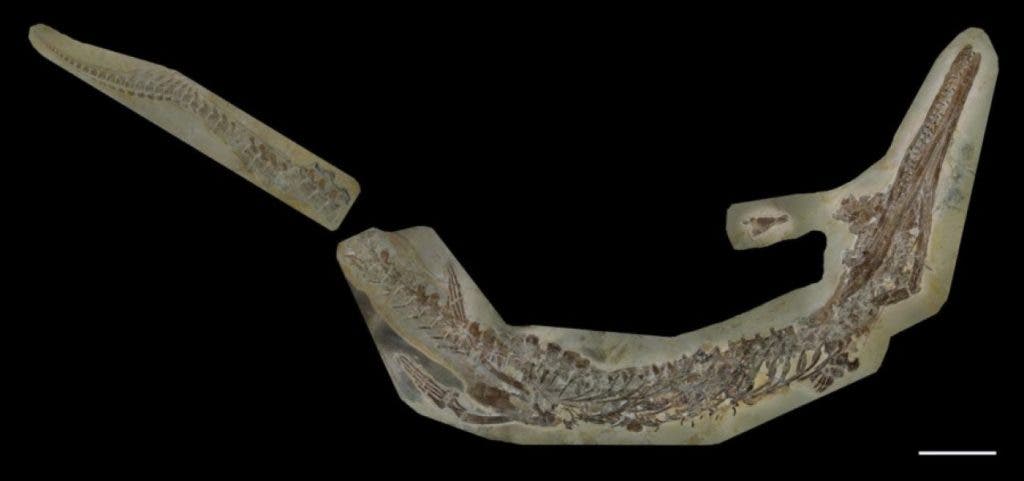An ancient fossil is giving us a glimpse into how the Earth came to have crocodiles.

Image credits Heinrich Mallison.
Modern crocodiles are the descendants of a slender, fin-tailed, paddle-limbed animal which lived in the sea, a new paper reports. These ancient creatures fed on the fast-moving prey (squid or small fish for example) that populated Jurassic shallow seas in what is today Germany — and looked more like dolphins than crocs.
Proto-croc
The rock formations of southern Germany continue to give us fresh insights into the age of dinosaurs,” says Dr Mark Young, of the University of Edinburgh’s School of GeoSciences, one of the study’s co-authors.
“These rock layers were deposited at a time when Europe was covered by a shallow sea, with countries such as Germany and the UK being a collection of islands.”
The study comes from an international team which included researchers from Germany and the University of Edinburgh. The fossil itself was discovered in 2014 in a quarry near the town of Bamberg in Bavaria, Germany by a team from the Naturkunde-Museum Bamberg, where it is now housed. The species was named Cricosaurus bambergensis in honor of the town where it was found.
After comparing the fossil with those from other museum collections, the team confirmed: while related species have previously been found in Mexico and Argentina, this one belonged to a previously-unseen species. Several features clearly distinguished this species from other crocs we’re found so far, the team explains. This specimen’s jaws, tail, and the roof of its mouth are, so far, unique.
To allow other researchers easy access to the fossil, the team also created digital, high-resolution images of it. They expect the fossil will aid greater understanding of a wider family of ancient animals, known as metriorhynchid, to which this species belonged.
Sven Sachs, from the Naturkunde-Museum Bielefeld, who led the project, said: “The study reveals peculiar features at the palate that have not been described in any fossil crocodile so far. There are two depressions which are separated by a pronounced bar. It is not clear what these depressions were good for.”
The paper “A new species of the metriorhynchid crocodylomorph Cricosaurus from the Upper Jurassic of southern Germany” was published in the journal Acta Palaeontologica Polonica.






